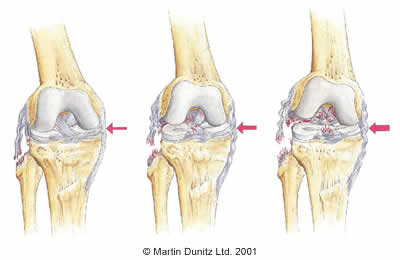| Common Signs & Symptoms | |||||
| Pain | Swelling | Stiffness | Weakness | Instability | Locking |
LCL Knee Ligament Injury Explained
The Lateral Collateral Ligament is the knee ligament that is located on the outside of the knee that links the thigh bone and the shin bone. It is the main stabiliser of the lateral aspect of the knee. A ligament injury is referred to as a sprain, and this knee injury can occur if the knee is twisted or subject to force from an opponent during sport. Sometimes if individuals are particular bow-legged (varus) they can be more susceptible to strain on the LCL.
Depending on the severity of the injury it is classified as first, second or third degree:
- A first degree sprain is damage to only a few ligament fibres.
- A second degree sprain is damage to a more extensive number of ligament fibres, but the ligament remains intact.
- A third degree sprain is a complete rupture of the ligament.
The injury is less common than damage to the Medial Ligament but, in collision sports such as rugby and football, the Lateral Ligament can be damaged when an opponent applies a force (such as a kick) to the inside aspect of the leg just below the knee.

A moderate impact against the inner side of the knee joint can cause the Lateral Collateral Ligament to rupture. A more violent impact causes the Anterior Cruciate Ligament to rupture as well. In severe cases the Posterior Cruciate Ligament also ruptures.
LCL Knee Ligament Injury Signs & Symptoms
With a first degree sprain of the Lateral ligament there will be pain when the site of the damage is touched. Stressing the ligament (when the knee is slightly bent and the shin is moved inwards in relation to the thigh) is painful – this action is reproduced when standing up from sitting in a chair.
In the case of a second degree sprain, the pain is more severe when the injury site is touched and when the ligament is stressed. Because the ligament is outside the knee joint, there may not be marked swelling of the knee. There may be pain present around the back of the knee where the ligament also has attachments into the muscles such as the Popliteus.
In the case of a third degree sprain, where the ligament is ruptured, the pain is excruciating and the knee joint becomes unstable.
LCL Knee Ligament Injury Treatment
What you can do
| Consult a sports injury expert | |
| Apply compression bandage to control swelling | |
| Apply ice packs/cold therapy | |
| Wear a knee brace for support & protection | |
| Use a buoyancy aid for pool exercises |
In the early stage of all three levels of injury, medication prescribed by a doctor for pain relief should be taken if necessary. The PRICE protocol should be followed – Protection, Rest, Ice, Compression and Elevation (never apply ice directly to the skin). The knee should be rested in an elevated position and Cohesive Bandage (which sticks to itself) should be used as a compression bandage to help prevent excessive swelling. A Knee Brace can be helpful to protect the knee and provide reassurance.
Ice Packs applied for 20 minutes every 2 hours can aid pain relief and help to prevent more tissue damage by cooling the tissues. The Ice Packs relieve pain and reduce bleeding within the tissue. The Aircast Knee Cryo/Cuff is the most effective method of providing ice therapy and can be used for the home treatment of knee injuries and knee pain. It can provide continuous ice cold water and compression for 6 hours to significantly reduce knee pain and knee swelling.
In the case of a first degree sprain, sporting activities should not be undertaken for about 3 weeks, until symptoms have resolved and some strength regained.
For second degree sprains, the rehabilitation period will be between 6 and 8 weeks. Rehabilitation under the supervision of a chartered physiotherapist is desirable to prevent a recurrence of the injury, which can be common if a return to sport is attempted too early. Running in a swimming pool, using a Buoyancy Aid, is an ideal method of maintaining fitness while the ligament is healing. Strengthening at both the ankle and hip, using a wobble board or resistance bands can also be beneficial in restoring stability before returning to sport.
In the case of a third degree sprain, where the ligament is completely ruptured, the treatment of choice is surgery to repair the structure. The type of reconstruction used will depend on the exact site of the damage and the preference of the surgeon.
LCL Knee Ligament Injury Prevention
What you can do
| Wear a knee brace for support & protection | |
| Use a Wobble Board to improve proprioception |
In the case of someone who has had a previous lateral ligament injury there may be a slight weakness, but there are measures that can be taken to help prevent a recurrence. A Knee Brace can provide increased knee stability and reassurance following previous knee injuries, especially during activities such as skiing.
Following a rehabilitation programme under the supervision of a chartered physiotherapist will help. This should include a lot of proprioception exercises (these improve the stimuli within the body relating to position and movement), since proprioceptive ability will be affected by the damage to the ligament. A Wobble Board is an excellent tool for continuing proprioception exercises at home.


